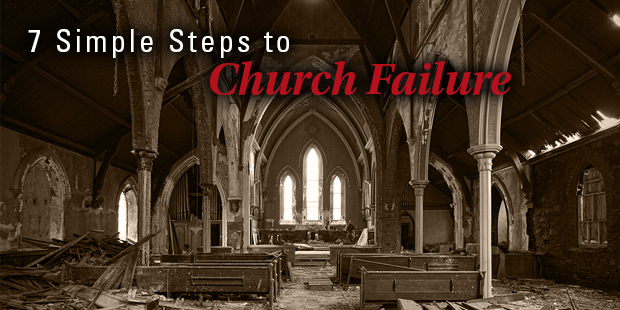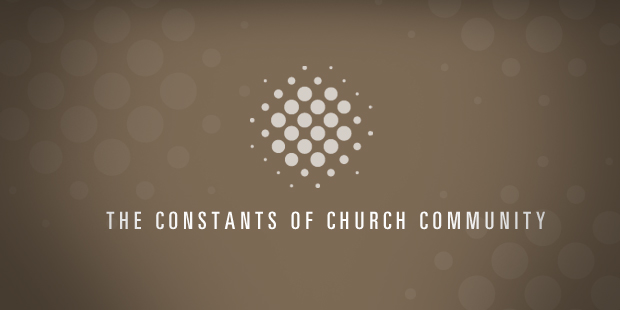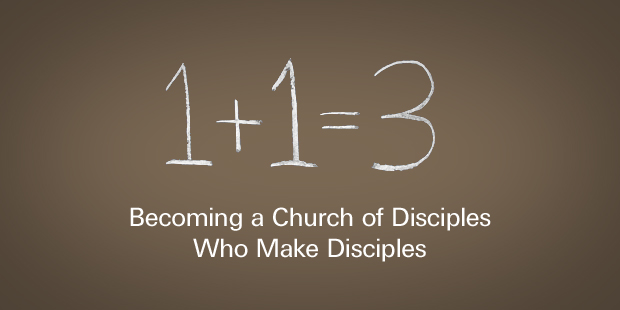If you regularly read my Vision Room content, you know that I tend to lean towards process and leadership themes. For people that know me only as a part of the leadership at Church Community Builder, that may seem inconsistent. After all, shouldn’t I be writing more practical, software focused articles?
If software alone were the answer to the challenges church leaders face when it comes to stewarding God’s people effectively, I might. The truth, however, is that software is only part of the answer. Maximum effectiveness and impact requires good tools (software is one option), solid processes, and passionate people working together in harmony. This isn’t just a theory of mine. I’ve learned it the hard way through many years of working and leading in both business and ministry.
I’ve also learned a lot from my good friend and co-worker, Dave Bair. As the guy who leads process development and Coaching for Church Community Builder, Dave understands and teaches this truth better than anyone I’ve ever met. In short, he’s brilliant! Dave and his team have made an amazing difference in hundreds of churches who have chosen to be coached, whether it be through their software implementation or through the development of a new Connections strategy.
Dave has a ton of insight to share about how to implement vision and strategy. So much so, in fact, that I have asked him to start sharing his thoughts and ideas here on the Vision Room. In the months ahead, you can look forward to regular articles from Dave that will really challenge your thoughts and ideas on how business-oriented themes like processes, systems and change management fit into the conversation about how we do ministry and reach people for Christ. I realize that many people don’t think those two things belong in the same conversation but they probably aren’t hanging out here on the Vision Room!
So, let’s get started by getting to know Dave a little bit.
Q & A with Dave Bair
Q: Dave, your experience before coming to Church Community Builder was really fascinating. Tell us a little about it.
More years ago than I care to admit, I got my degree in electrical engineering, with a minor in psychology. While that might be an unusual combination, I have always been interested in how stuff works, whether they be machines or people.
Straight out of college, I went to work for Hewlett Packard, helping to create software for procurement and inventory management. While I was there, I got a chance to design, build, and test software. Over time, I realized our software didn’t really scratch the itch for the customer. That was the point where I began informally consulting to the customer and helped improve their processes to the point where software could be helpful.
I enjoyed the process work with the customer so much that I eventually moved to a consulting firm specializing in leading large change projects in heavy industry. I got the chance to consult to companies like Kraft, BP, DuPont, BASF, The Electricity Supply Board of Ireland, Total, Husky Oil, and a variety of power companies. I learned that managing the change journey was just as important, if not more important, than getting the right answer. That was a very fun job getting to travel all over the US and beyond to coach business leaders, implementing culture and process improvements.
Q: Why would a Church Management Software company be interested in someone like you?
After roughly 8 years working with church leaders, Church Community Builder realized some were getting better with the purchase our software, and some were not. After some digging, they observed that the difference appeared to be the quality of the processes the software was being asked to support. With that realization, we decided to create this coaching service helping church leaders implement better processes to better utilize our software. I think they had come to the same realization I had back at HP – the combination of people, processes, and technology is really the recipe for success.
Q: Can you tell us more about this “Coaching” service?
We like the term “coaching” because it implies someone who walks alongside an individual or organization as they seek to become better at something. That is exactly what we seek to do. In our current context, most of our coaching is done with church leaders who want to implement our software effectively and realize that technology is only part of the equation. Each church is different and has a unique culture and processes. We’ve developed a methodology which allows our proven expertise to be customized for each church as we guide them towards their goals. We focus on five main areas: software utilization, project planning, process design, leadership coaching, and change management
Q: Working in heavy industry and the local church seem pretty unrelated. Can you help us make the leap from one to the other?
Over the years, I have come to believe most organizations have the answers they need to be successful; implementation, not knowledge, creates the gap between great vision and great success. Time and time again, I have observed that success results from good processes, executed through well managed change. Those principles apply regardless of industry, whether it be maintaining a power plant or managing volunteers at a church.
Q: You talk a lot about processes but you also mentioned culture. How do those relate to each other?
Culture is the glue that makes processes more effective and sustainable. Culture must be congruent with the processes as they can sabotage each other if they don’t line up. If the leader advocates for a certain set of processes, but also supports a different behavior in the culture, both will suffer.
Q: Tell us a little about you…personally. When you are not coaching church leaders what do you do?
I have been married to an amazing woman for nearly 19 years now. I have two kids. My daughter is a freshman in college studying chemistry. My son is a freshman in high school with a lot of his time focused on music, playing saxophone and drums. When I am not coaching church leaders, I enjoy reading a lot, hiking around Colorado, and flying hot air balloons. Ballooning has been a family hobby for us for many years and we love the camaraderie and the challenge.
Q: How can someone connect with you for a deeper conversation?
The best place to start is the Church Community Builder website. In addition, they can connect with me on Twitter or LinkedIn.
Like me, I hope you look forward to learning more from Dave in the weeks and months to come.
Has the vision for your church ever been sabotaged by ineffective processes? How did you “fix” them?
> Read more from Steve.

Tags: Church Community Builder, Dave Bair, Process, Steve Caton
|
What is MyVisionRoom? > | Back to Process >


























